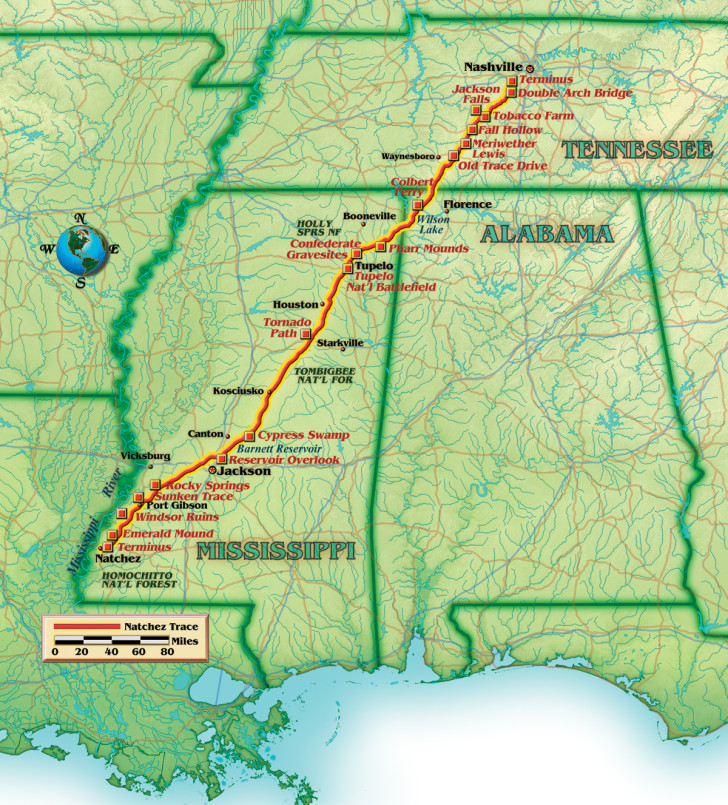- Click here for the article.
Even before the 1803 Louisiana Purchase, President Thomas Jefferson wanted to connect the distant Mississippi frontier to other settled areas of the United States. To foster communication with what was then called the Southwest, he directed construction of a postal road to be built between Daniel Boone's Wilderness Road (the southern branch of the road ended at Nashville) and the Mississippi River.
The U.S. signed treaties with the Chickasaw and Choctaw tribes to maintain peace, as European Americans entered the area in greater numbers. In 1801 the United States Army began trail blazing along the Trace, performing major work to prepare it as a thoroughfare. The work was first done by soldiers reassigned from Tennessee and later by civilian contractors. To emphasize American sovereignty in the area, Jefferson called it the "Columbian Highway." The people who used it, however, dubbed the road as "The Devil's Backbone" due to its remoteness, rough conditions, and the frequently encountered highwaymen found along the new road.
By 1809, the trail was fully navigable by wagon, with the northward journey taking two to three weeks. Critical to the success of the Trace as a trade route was the development of inns and trading posts, referred to at the time as "stands."
